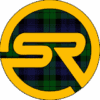Guitar
Big Mon (Guitar Tab + Slow Jam)
Bill Monroe's tune Big Mon is a staple among Bluegrass jam sessions. This video plays the melody twice. Once at…Angeline the Baker
Angeline the Baker Key of D Virtual slow jam with the melody played on guitar the first and last time…Cripple Creek
Cripple Creek Key of A Capo 2nd Somewhere between Bluegrass and Old-Time is how I like to play fiddle tunes…The Lester Flatt Run – 12 Variations
Here are 12 variations of the classic Lester Flatt run also known as the G-Run. It’s a snappy tag lick…Scale Harmony for Guitar
In this video we’ll take a look at harmonizing a C major scale on the guitar. It’s quite simple…Sally Goodin
Sally Goodin Key of A, Capo 2nd.Crosspicking 102 – Sitting on Top of the World
Here is a fine example of crosspicking in the tradition of George Shuffler who played with The Stanley Brothers back…Beaumont Rag
Beaumont Rag, what is there to say? It's a timeless classic from deep in the heart of Texas. A consummate…Dueling Banjos
This is my rendition of the classic tune from the movie "Deliverance". Key of A, capo 2nd fret. Tab for…Whiskey Before Breakfast
Whiskey Before Breakfast is a must know tune regardless of what instrument you play. While some pickers play it in…
